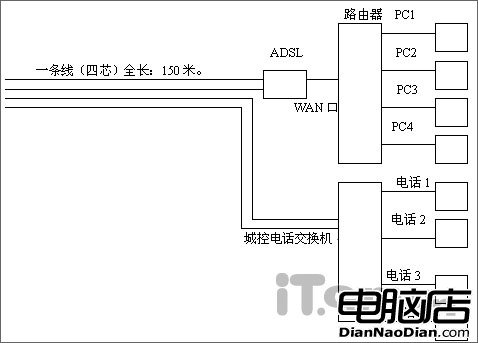進程描述
- 進程描述符(task_struct)
用來描述進程的數(shù)據(jù)結(jié)構(gòu),可以理解為進程的屬性。比如進程的狀態(tài)、進程的標(biāo)識(PID)等,都被封裝在了進程描述符這個數(shù)據(jù)結(jié)構(gòu)中,該數(shù)據(jù)結(jié)構(gòu)被定義為task_struct
- 進程控制塊(PCB)
是操作系統(tǒng)核心中一種數(shù)據(jù)結(jié)構(gòu),主要表示進程狀態(tài)。
- 進程狀態(tài)

- fork()
fork()在父、子進程各返回一次。在父進程中返回子進程的 pid,在子進程中返回0。
fork一個子進程的代碼
#include <stdio.h>#include <stdlib.h>#include <unistd.h>int main(int argc, char * argv[]){int pid;/* fork another process */pid = fork();if (pid < 0) { /* error occurred */ fprintf(stderr,"Fork Failed!"); exit(-1);} else if (pid == 0) { /* child process */ printf("This is Child Process!/n");} else { /* parent process */ printf("This is Parent Process!/n"); /* parent will wait for the child to complete*/ wait(NULL); printf("Child Complete!/n");}} 進程創(chuàng)建
1、大致流程
fork 通過0x80中斷(系統(tǒng)調(diào)用)來陷入內(nèi)核,由系統(tǒng)提供的相應(yīng)系統(tǒng)調(diào)用來完成進程的創(chuàng)建。
fork.c//fork#ifdef __ARCH_WANT_SYS_FORKSYSCALL_DEFINE0(fork){#ifdef CONFIG_MMU return do_fork(SIGCHLD, 0, 0, NULL, NULL);#else /* can not support in nommu mode */ return -EINVAL;#endif}#endif//vfork#ifdef __ARCH_WANT_SYS_VFORKSYSCALL_DEFINE0(vfork){ return do_fork(CLONE_VFORK | CLONE_VM | SIGCHLD, 0, 0, NULL, NULL);}#endif//clone#ifdef __ARCH_WANT_SYS_CLONE#ifdef CONFIG_CLONE_BACKWARDSSYSCALL_DEFINE5(clone, unsigned long, clone_flags, unsigned long, newsp, int __user *, parent_tidptr, int, tls_val, int __user *, child_tidptr)#elif defined(CONFIG_CLONE_BACKWARDS2)SYSCALL_DEFINE5(clone, unsigned long, newsp, unsigned long, clone_flags, int __user *, parent_tidptr, int __user *, child_tidptr, int, tls_val)#elif defined(CONFIG_CLONE_BACKWARDS3)SYSCALL_DEFINE6(clone, unsigned long, clone_flags, unsigned long, newsp, int, stack_size, int __user *, parent_tidptr, int __user *, child_tidptr, int, tls_val)#elseSYSCALL_DEFINE5(clone, unsigned long, clone_flags, unsigned long, newsp, int __user *, parent_tidptr, int __user *, child_tidptr, int, tls_val)#endif{ return do_fork(clone_flags, newsp, 0, parent_tidptr, child_tidptr);}#endif 通過看上邊的代碼,我們可以清楚的看到,不論是使用 fork 還是 vfork 來創(chuàng)建進程,最終都是通過 do_fork() 方法來實現(xiàn)的。接下來我們可以追蹤到 do_fork()的代碼:
long do_fork(unsigned long clone_flags, unsigned long stack_start, unsigned long stack_size, int __user *parent_tidptr, int __user *child_tidptr){ //創(chuàng)建進程描述符指針 struct task_struct *p; //…… //復(fù)制進程描述符,copy_process()的返回值是一個 task_struct 指針。 p = copy_process(clone_flags, stack_start, stack_size, child_tidptr, NULL, trace); if (!IS_ERR(p)) { struct completion vfork; struct pid *pid; trace_sched_process_fork(current, p); //得到新創(chuàng)建的進程描述符中的pid pid = get_task_pid(p, PIDTYPE_PID); nr = pid_vnr(pid); if (clone_flags & CLONE_PARENT_SETTID) put_user(nr, parent_tidptr); //如果調(diào)用的 vfork()方法,初始化 vfork 完成處理信息。 if (clone_flags & CLONE_VFORK) { p->vfork_done = &vfork; init_completion(&vfork); get_task_struct(p); } //將子進程加入到調(diào)度器中,為其分配 CPU,準(zhǔn)備執(zhí)行 wake_up_new_task(p); //fork 完成,子進程即將開始運行 if (unlikely(trace)) ptrace_event_pid(trace, pid); //如果是 vfork,將父進程加入至等待隊列,等待子進程完成 if (clone_flags & CLONE_VFORK) { if (!wait_for_vfork_done(p, &vfork)) ptrace_event_pid(PTRACE_EVENT_VFORK_DONE, pid); } put_pid(pid); } else { nr = PTR_ERR(p); } return nr;} 2、do_fork 流程
- 調(diào)用 copy_process 為子進程復(fù)制出一份進程信息
- 如果是 vfork 初始化完成處理信息
- 調(diào)用 wake_up_new_task 將子進程加入調(diào)度器,為之分配 CPU
- 如果是 vfork,父進程等待子進程完成 exec 替換自己的地址空間
3、copy_process 流程
追蹤copy_process 代碼(部分)
static struct task_struct *copy_process(unsigned long clone_flags, unsigned long stack_start, unsigned long stack_size, int __user *child_tidptr, struct pid *pid, int trace){ int retval; //創(chuàng)建進程描述符指針 struct task_struct *p; //…… //復(fù)制當(dāng)前的 task_struct p = dup_task_struct(current); //…… //初始化互斥變量 rt_mutex_init_task(p); //檢查進程數(shù)是否超過限制,由操作系統(tǒng)定義 if (atomic_read(&p->real_cred->user->processes) >= task_rlimit(p, RLIMIT_NPROC)) { if (p->real_cred->user != INIT_USER && !capable(CAP_SYS_RESOURCE) && !capable(CAP_SYS_ADMIN)) goto bad_fork_free; } //…… //檢查進程數(shù)是否超過 max_threads 由內(nèi)存大小決定 if (nr_threads >= max_threads) goto bad_fork_cleanup_count; //…… //初始化自旋鎖 spin_lock_init(&p->alloc_lock); //初始化掛起信號 init_sigpending(&p->pending); //初始化 CPU 定時器 posix_cpu_timers_init(p); //…… //初始化進程數(shù)據(jù)結(jié)構(gòu),并把進程狀態(tài)設(shè)置為 TASK_RUNNING retval = sched_fork(clone_flags, p); //復(fù)制所有進程信息,包括文件系統(tǒng)、信號處理函數(shù)、信號、內(nèi)存管理等 if (retval) goto bad_fork_cleanup_policy; retval = perf_event_init_task(p); if (retval) goto bad_fork_cleanup_policy; retval = audit_alloc(p); if (retval) goto bad_fork_cleanup_perf; /* copy all the process information */ shm_init_task(p); retval = copy_semundo(clone_flags, p); if (retval) goto bad_fork_cleanup_audit; retval = copy_files(clone_flags, p); if (retval) goto bad_fork_cleanup_semundo; retval = copy_fs(clone_flags, p); if (retval) goto bad_fork_cleanup_files; retval = copy_sighand(clone_flags, p); if (retval) goto bad_fork_cleanup_fs; retval = copy_signal(clone_flags, p); if (retval) goto bad_fork_cleanup_sighand; retval = copy_mm(clone_flags, p); if (retval) goto bad_fork_cleanup_signal; retval = copy_namespaces(clone_flags, p); if (retval) goto bad_fork_cleanup_mm; retval = copy_io(clone_flags, p); //初始化子進程內(nèi)核棧 retval = copy_thread(clone_flags, stack_start, stack_size, p); //為新進程分配新的 pid if (pid != &init_struct_pid) { retval = -ENOMEM; pid = alloc_pid(p->nsproxy->pid_ns_for_children); if (!pid) goto bad_fork_cleanup_io; } //設(shè)置子進程 pid p->pid = pid_nr(pid); //…… //返回結(jié)構(gòu)體 p return p; - 調(diào)用 dup_task_struct 復(fù)制當(dāng)前的 task_struct
- 檢查進程數(shù)是否超過限制
- 初始化自旋鎖、掛起信號、CPU 定時器等
- 調(diào)用 sched_fork 初始化進程數(shù)據(jù)結(jié)構(gòu),并把進程狀態(tài)設(shè)置為 TASK_RUNNING
- 復(fù)制所有進程信息,包括文件系統(tǒng)、信號處理函數(shù)、信號、內(nèi)存管理等
- 調(diào)用 copy_thread 初始化子進程內(nèi)核棧
- 為新進程分配并設(shè)置新的 pid
4、dup_task_struct 流程
static struct task_struct *dup_task_struct(struct task_struct *orig){ struct task_struct *tsk; struct thread_info *ti; int node = tsk_fork_get_node(orig); int err; //分配一個 task_struct 節(jié)點 tsk = alloc_task_struct_node(node); if (!tsk) return NULL; //分配一個 thread_info 節(jié)點,包含進程的內(nèi)核棧,ti 為棧底 ti = alloc_thread_info_node(tsk, node); if (!ti) goto free_tsk; //將棧底的值賦給新節(jié)點的棧 tsk->stack = ti; //…… return tsk;} 調(diào)用alloc_task_struct_node分配一個 task_struct 節(jié)點
調(diào)用alloc_thread_info_node分配一個 thread_info 節(jié)點,其實是分配了一個thread_union聯(lián)合體,將棧底返回給 ti
union thread_union { struct thread_info thread_info; unsigned long stack[THREAD_SIZE/sizeof(long)];}; 最后將棧底的值 ti 賦值給新節(jié)點的棧
最終執(zhí)行完dup_task_struct之后,子進程除了tsk->stack指針不同之外,全部都一樣!
5、sched_fork 流程
core.c
int sched_fork(unsigned long clone_flags, struct task_struct *p){ unsigned long flags; int cpu = get_cpu(); __sched_fork(clone_flags, p); //將子進程狀態(tài)設(shè)置為 TASK_RUNNING p->state = TASK_RUNNING; //…… //為子進程分配 CPU set_task_cpu(p, cpu); put_cpu(); return 0;} 我們可以看到sched_fork大致完成了兩項重要工作,一是將子進程狀態(tài)設(shè)置為 TASK_RUNNING,二是為其分配 CPU
6、copy_thread 流程
int copy_thread(unsigned long clone_flags, unsigned long sp, unsigned long arg, struct task_struct *p){ //獲取寄存器信息 struct pt_regs *childregs = task_pt_regs(p); struct task_struct *tsk; int err; p->thread.sp = (unsigned long) childregs; p->thread.sp0 = (unsigned long) (childregs+1); memset(p->thread.ptrace_bps, 0, sizeof(p->thread.ptrace_bps)); if (unlikely(p->flags & PF_KTHREAD)) { //內(nèi)核線程 memset(childregs, 0, sizeof(struct pt_regs)); p->thread.ip = (unsigned long) ret_from_kernel_thread; task_user_gs(p) = __KERNEL_STACK_CANARY; childregs->ds = __USER_DS; childregs->es = __USER_DS; childregs->fs = __KERNEL_PERCPU; childregs->bx = sp; /* function */ childregs->bp = arg; childregs->orig_ax = -1; childregs->cs = __KERNEL_CS | get_kernel_rpl(); childregs->flags = X86_EFLAGS_IF | X86_EFLAGS_FIXED; p->thread.io_bitmap_ptr = NULL; return 0; } //將當(dāng)前寄存器信息復(fù)制給子進程 *childregs = *current_pt_regs(); //子進程 eax 置 0,因此fork 在子進程返回0 childregs->ax = 0; if (sp) childregs->sp = sp; //子進程ip 設(shè)置為ret_from_fork,因此子進程從ret_from_fork開始執(zhí)行 p->thread.ip = (unsigned long) ret_from_fork; //…… return err;} copy_thread 這段代碼為我們解釋了兩個相當(dāng)重要的問題!
一是,為什么 fork 在子進程中返回0,原因是childregs->ax = 0;這段代碼將子進程的 eax 賦值為0
二是,p->thread.ip = (unsigned long) ret_from_fork;將子進程的 ip 設(shè)置為 ret_form_fork 的首地址,因此子進程是從 ret_from_fork 開始執(zhí)行的
總結(jié)
新進程的執(zhí)行源于以下前提:
- dup_task_struct中為其分配了新的堆棧
- 調(diào)用了sched_fork,將其置為TASK_RUNNING
- copy_thread中將父進程的寄存器上下文復(fù)制給子進程,保證了父子進程的堆棧信息是一致的
- 將ret_from_fork的地址設(shè)置為eip寄存器的值
最終子進程從ret_from_fork開始執(zhí)行。
以上就是針對Linux內(nèi)核創(chuàng)建一個新進程的過程的詳細(xì)分析,希望對大家的學(xué)習(xí)有所幫助。



















